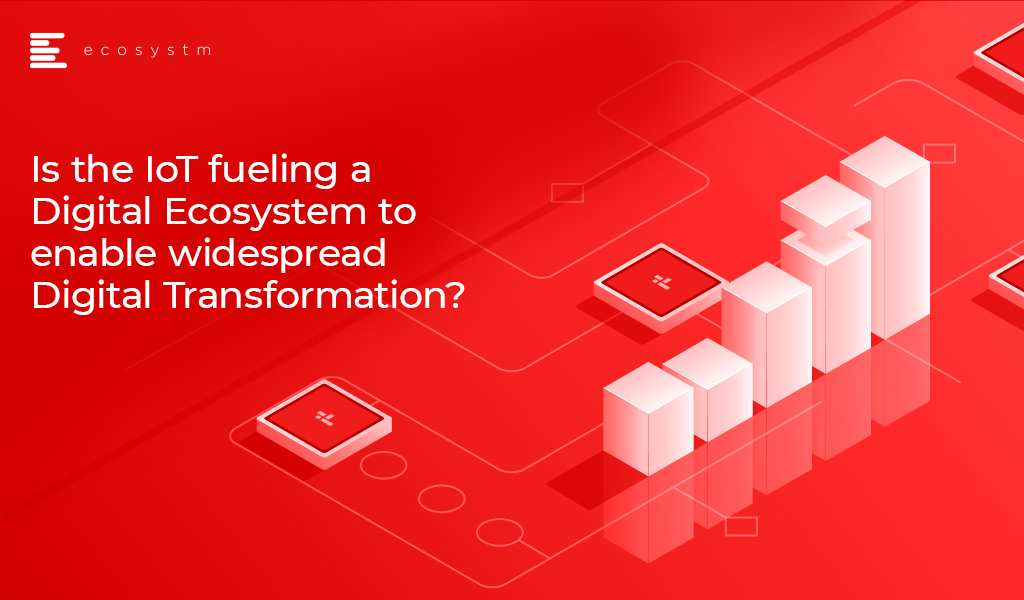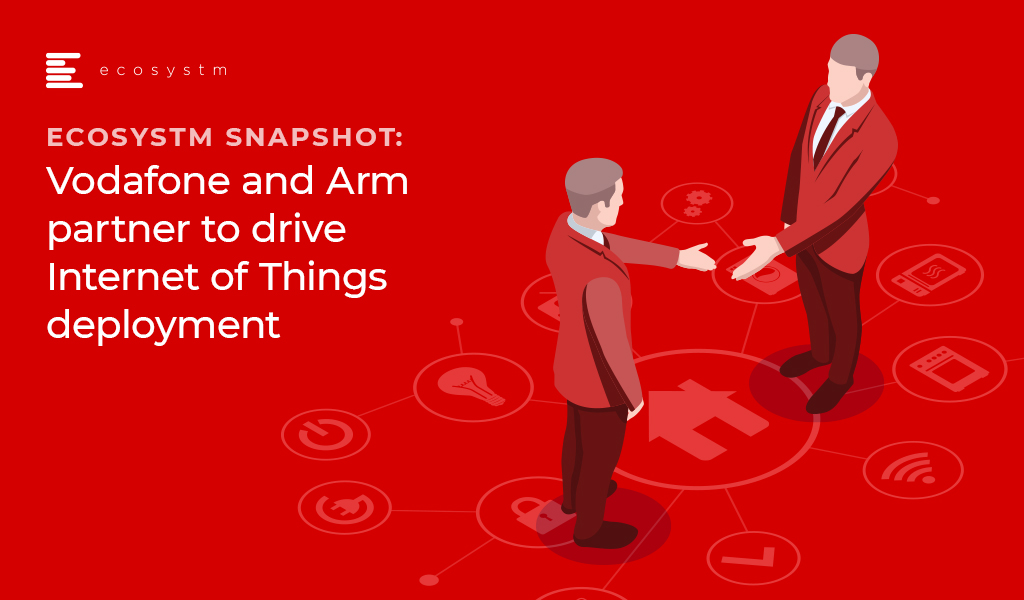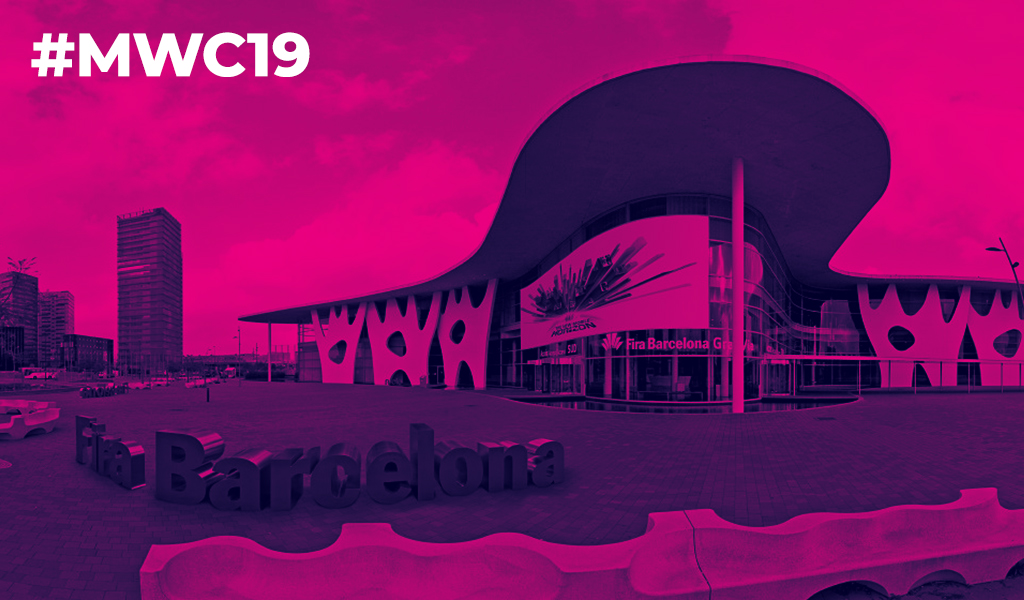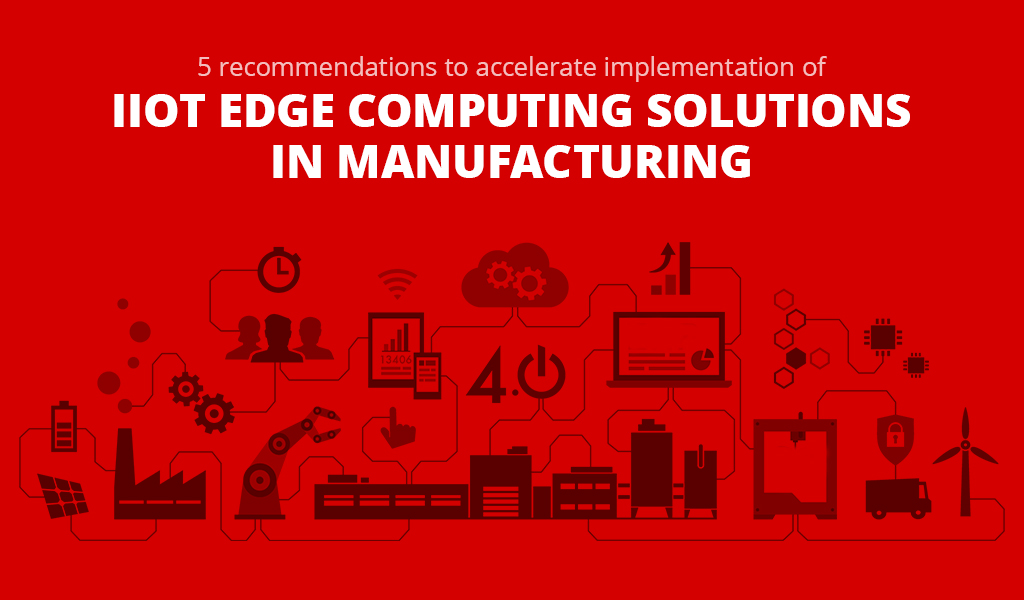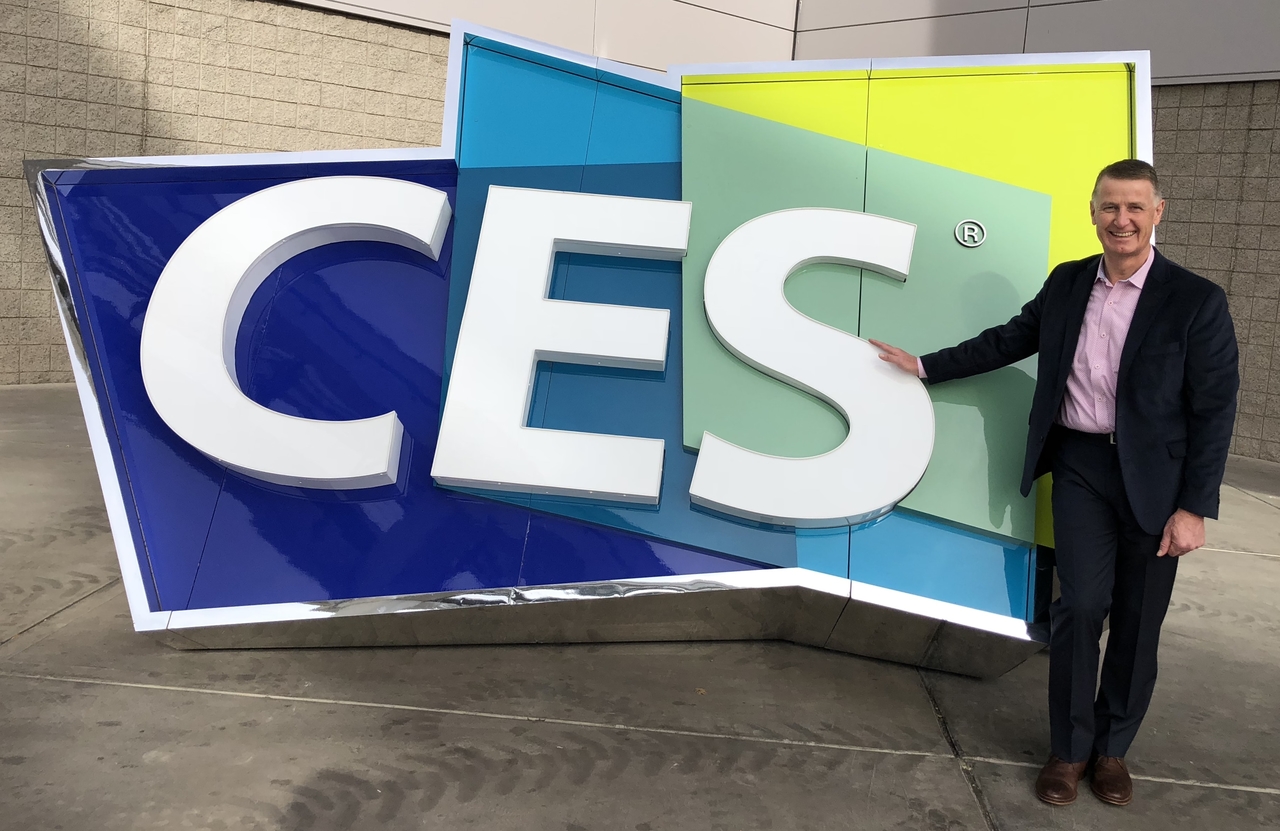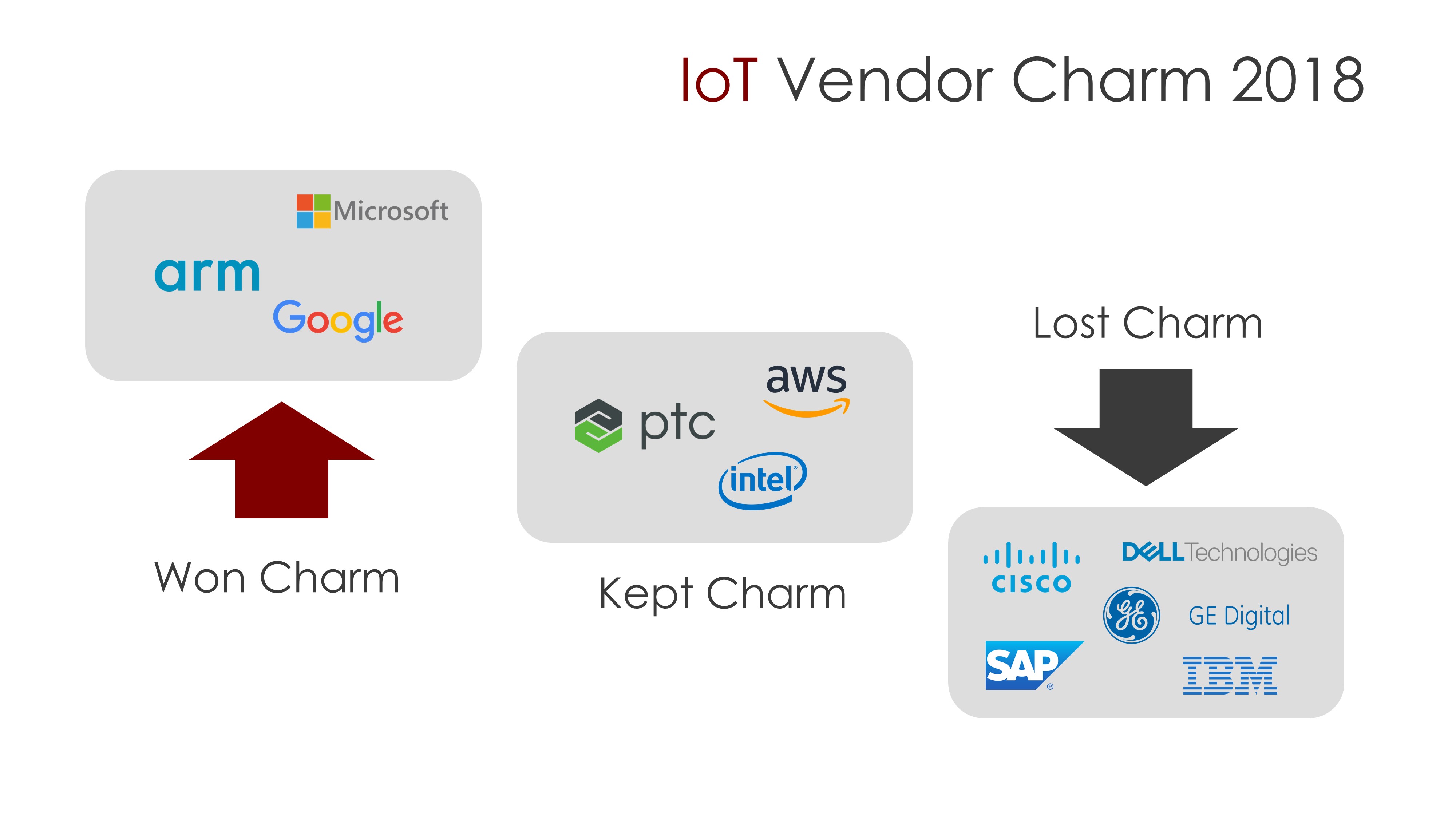Is the IoT fueling a Digital Ecosystem to enable widespread Digital Transformation?
Ready or not, digital transformation (DX) is here and is already revealing its impact on every aspect of our lives. In some cases, the transformation is obvious. Take the way we call for a ride-share or taxi, find a room to stay, or chat to a robot for your favourite song – these are all part of mainstream DX. More subtle examples, with a Digital Ecosystem working behind the scenes, can be found in things like checking out at the retail store without ever opening your wallet or jumping into the latest automobile and getting your directions mapped out for you.
DX is often described as the integration of digital technology into all areas of business while changing how you operate and deliver value to customers. Advancements involving cloud computing, analytics, social and mobile technologies are reshaping the customer experience (CX) and opening the door for innovation and new business services. DX is also a cultural change that requires organisations to continually experiment with new ideas while being comfortable with failure and accepting that speed has become a business imperative for everyone.
DX will fundamentally change the way we think about creating a product and how we take it to market. Gone are the days of ‘make and sell’— that is, finding a market (after the fact) for the latest bright and shiny invention or innovation and forgetting about the “thing” that’s left behind with the customer. We have flipped from building stagnant technology-for-technology’s sake, as well as having little or no real-time information about most of the product’s lifecycle, to now creating customer-centric solutions teeming with data about everything at all times.
What’s fueling this major shift? The widespread connection of things to the Internet that had never been connected before, including machine-to-machine connectivity. All thanks to embedded smart sensors making IoT an omnipresent phenomenon. By 2025 there will be over 80 billion ‘things’ connected to the Internet which in turn will provide input to feed digitally transformed companies. Industrial business models everywhere will also flip to a ‘sense and respond’ environment where customers and suppliers will know almost everything there is to know about the service or product being sold and delivered to us (within the realms of data privacy regulations).
The Emergence of the Digital Exchange
In the midst of this DX there is vast opportunity: a new customer engagement model to make things better and easier for everyone. Digital businesses cannot be built and serviced by a single supplier – it’s just too complex. There are too many new sources of IoT data that are used to feed business systems and to drive outcomes. Instead, we are seeing businesses that serve the same set of customers from consortia or digital ecosystems or digital exchanges made up of a wide range of participants with an equally wide range of talents and needs.
As more companies become digital, we expect that there will be thousands of ecosystems in existence across every industry. In this collaborative environment, companies with a mutual interest in a particular industry — sometimes crossing traditional industry lines — will join a digital exchange whereby they can openly innovate and scale their business by tapping in to a global community. Just think of the power and value of the exchange as being similar to the network effect (something like Metcalfe’s Law) whereby the more the participants engage in activities in the exchange, the more value everyone gets out of the digital exchange. Microsoft’s Satya Nadella calls this “creating more surplus outside us.”
Some of the key benefits we can expect from the digital exchange are:
- Co-innovation between startups looking for partners and established vendors looking for external ideas for product improvement
- Collaboration to solve like-minded industry challenges
- Creation of open and interoperable tools to speed up new products and services offerings
- Ability to leverage a large and diverse set of partners who can help each other discover new markets and services within their own industry and beyond
Digital exchanges can be wild and confusing, and they may seem disorganised to the newcomer. Think of the first impression you have when you walk into a large open-air market selling antiques. Initially everything seems to be piled into stalls with no logical reason. However, to the experienced shopper and stall owner, there is an organised manner to it that makes sense. And there are many wonderful things waiting to be revealed.
At this year’s Hannover Messe an original example of a digital exchange was rolled out by Schneider Electric called Schneider Electric Exchange — their digital ecosystem and business platform. Schneider Electric Exchange also has a structure to it that is geared up to help specific roles or personas and make it easier for anyone to find the right partner for solving specific business challenges. It is also set up to step someone through the life-cycle process of creating a solution by connecting them to the right tools with the right partners for the right markets. Business value can be created within the Exchange but is equally powerful outside when delivered to the end user. For example, building management designers can use Schneider Electric Exchange to find partners who are also experts of emerging technologies such as digital twins, 3D-Print, AR, and analytics.
We believe that digital exchanges will create immediate economic benefits by reducing friction and inefficiencies in the overall customer supply chain. Participants will be able to innovate faster and deliver quicker — even as customers’ experiences and expectations rise, evolve, and change at the lightning pace of the digital economy. Over time we expect that vendors’ Net Promoter Score (NPS) to rise as a result of improved business processes from these exchanges.
In conclusion, IoT will be the pebble that creates the ripple in the DX pond. Data will be created from every sensor that will be used to create competitive differences at every stage of a company’s value chain. Businesses that do not embrace the use of the data and innovate themselves as well as their products do run the risk of being very quickly disrupted. Companies also do not have the financial and technical resources to do all of this by themselves – hence, the opportunity to be part of a digital exchange is the way to be agile, cost-effective, and competitive. Every time, businesses that waited while a new ‘industrial revolution’ was taking place, lost out. Today, who will dare to disrupt instead of being disrupted? We are at the tipping point of digital transformation and there is no time left to sit on the sidelines – businesses need to jump in to a dynamic digital ecosystem and partner with each other through their industry’s digital exchange!
Vodafone and Arm announced a strategic agreement at MWC19 to work on simplifying IoT services and reduce the costs confronted by the organisations on the implementation of IoT.
The Vodafone-Arm agreement expands on the previous collaboration which was on integrated SIM (iSIM) technology, a system on chip(SOC) design which can be reprogrammed with respect to the requirements. The iSIM allows customers to remotely provision and manage IoT devices across the globe which proposes reduced complexities and offers significant cost reduction.
To carry on the existing relationships this agreement is expected to bring Vodafone’s IoT global platform and Arm’s IoT software services to offer organisations a world of connected systems. This characterises a major initiative enabling a wide ecosystem of manufacturers to tap into the potential of trillions of connected devices.
Speaking on the subject, Ecosystm’s Executive Analyst, Vernon Turner thinks that “this announcement will help customers who look to and need a cellular-based IoT solution. Traditionally, mobile devices require a physical process to change their SIM (Subscriber Identity Module) card when there is a change of ownership or carrier, but in a world of trillions of connected devices, this is just not practical.”
Arm’s announcement of its iSIM is the latest in a series of announcements to resolve the size, cost, and scalability of SIM cards. SIM cards are critical for secure identity so the challenge has been to create a cost-effective IoT System On Chip (SOC) that has the SIM function embedded on it. Through its Kigen product family, Arm’s tech buyers will be able to build solutions on the latest cellular standards and specification suitable to run on 5G and backward compatible networks.
Vodafone’s customers will now be able to create a cellular-based IoT solution that can be continuously connected and deployed globally, giving them better investment protection and reduced operational costs. In addition, customers will have the choice of managing these devices through a ‘single pane of glass’ on either Vodafone’s IoT platform or Arm’s Pelion IoT Platform.
“Any time complexity is removed from an IT or mobile solution, customers respond by deploying and using that solution more” says Vernon. “ SoC-based solutions tend to have more functionality that allows for innovation, so we should expect to see an uptick in cellular-based IoT deployments”
At last, the Mobile World Congress (MWC) – the world’s largest exhibition for the mobile industry – is moving back to its origins. 5G technology has been a star in this year’s conference and I must say that it still has almost the same number of defenders as detractors. Opinions from both sides – the proponents and the critics – have been heard this week in Barcelona and while in the middle I have adopted an easy and not very brave opinion on this aspect. I still think that 5G can bring great advances in many sectors such as healthcare or transport, but contrary to this I don’t think that we will be using 5G in Virtual Reality multi-player games. That’s like, too much investment for a few general use cases of the technology.
I went to Barcelona to discover about happenings on the Internet of Things (IoT), start-ups and to discuss advances on IoT strategies with Operators, Manufacturers and System Integrators who were present at this Congress.
The gist of my visit at the end of my three days time and impressive 70,000 steps on my Fitbit tracker, is that the role of IoT at MWC has been diluted. A couple of years ago almost all the exhibitors used the word IoT on their stalls, many without knowing anything about what it was and today, it hardly appears on a few. There are no longer innovations, nor new use cases that attract visitors.
IoT and Operators
In the long-wait of 5G, IoT operators are torn between several technologies such as NB-IoT or LTE-M o LPWAN networks. The LoRA alliance had a booth in Hall #8 (the Hall of the poor’s, I call this Hall). SigFox did not even attend this year’s conference, which further increased the rumors among the attendees on the possible precarious situation of the French Operator.
Analysts should revise their estimates downwards based on data from new connections announced by Vodafone or Telefonica this year. I agree with Allen Proithis, Global Tech Executive: IoT, Digital Transformation, Strategic Partnerships, Emerging Technology, he said “the lack of emphasis on IoT reflects the struggle of mobile operators to monetize IoT outside of connections, especially at the SaaS or data level”
Winner MWC2019 – Deutsche Telekom – IoT Solution Optimiser
IoT and Network Infrastructure Vendors
This section is reserved for a few players – Ericsson, Huawei, and Nokia share most of the pie around the network infrastructure. A suspicion of Huawei security and doubts on the Operator’s role in election outcomes can delay 5G deployments in Europe. The Americans and the Chinese have already placed their decisions.
Only Huawei granted me an opportunity to meet their VP, a friend of mine.
I tried several times to reach Nokia whereas I did not even try to reach Ericsson this year, I already heard its strategy three times in the last year.
By far, Nokia has gained in terms of its connectivity offer with Nokia Wing, the ecosystem and the use cases (somewhat more advanced than those presented last year).
Winner MWC2019 – Nokia – Nokia Wing
IoT and IT Technology Vendors
The technology behemoth Microsoft revealed its second-generation HoloLens AR and all I can say is that it left a ridiculous gap for IoT. Other IT giants such as Dell-EMC-VMware, SAP, Cisco, Oracle, SAS or SAG-Cumulocity did not showcase anything new.
Moving towards the System Integrators, they are not even expected at this fair in relation to IoT. Neither the Cloud, nor the Edge IIoT, nor the IoT Platforms, nor the IoT applications had any new ideas that could have attracted the interest of veterans and novices. Where are the millions of dollars going in the industry, which they say are being spent on IoT?
Winner MWC2019 – No Conclusión
IoT and Countries
Finding an IoT gem among the many tiny cubicles of various countries was similar to finding a needle in a haystack. To me, there was hardly any interest to go through the dozens of small companies that used this event as a stage to make themselves visible to the world. The umbrella allows them to be here but attracting visitors between so much noise and variety to their booth was a big and miraculous task.
Every year, I get in touch with IoT companies and know companies from Israel, UK, Sweden, Canada or France. However, this year to my surprise, I found an interesting company in the pavilion of Belgium. They have developed another league of IoT platform and I liked what they have achieved with Orange. They are my winner of this year.
My special regards to the Colombia pavilion and my friend Edgar Salas.
Winner MWC2019 – AllThingsTalk
IoT and Start-ups
I could not visit 4YFN, but I went to IoT Stars. My friend Marc Pous and his colleagues always do a great job, who comes as a jury every year. It was a good time spent with them over a beer while sharing impressions of the IoT and discussing new ideas to accelerate this market once and for all.
In my opinion, there was no great achievement this year and I still notice a gap in the Industrial IoT start-up space. Most ideas are like “Déjà vu” applications for Consumer IoT which reminds me of the post-years after the Internet boom. Much remains to be done here and it will take time for Universities to train innovators and entrepreneurs of IoT.
Winner MWC2019 – No Conclusión
P.S. The IoT Stars jury awarded two prizes
Key Takeaway:
It does not matter; this Congress was as soporific as the Oscars ceremony but for some strange reasons I keep coming back every year. Although after the fiasco of 2019, my expectations were set to find progress and opportunities in IoT but considering the after-effects, I think next year I will reduce my stay to only two days.
It has become clear that the MWC no longer holds anything interesting with respect to IoT to attract visitors, exhibitors, companies. Instead, IoT enthusiasts should probably look to other – more focussed – industry events.
If you want me to cover anything specific on IoT from MWC,19 then let me know in your comments.
Is IIoT Edge Computing solution a real Internet of Things (IoT) trend for 2019?
As large hardware manufacturers like Cisco, HPE, Dell and more are building specific, robust and secure infrastructure for the edge, it is believed that there will be a lot of money flowing in the IIoT Edge computing world.
The Development and implementation of Edge-Machine Learning solutions is a complex process and requires a combination of rich industry experience, knowledge of automation (PLCs, SCADAS, HMIs), electrical & mechanical engineering along with unique Edge Computing distributed system. This is used by Data Scientists to develop Machine Learning algorithms which can be utilised by IIoT applications in the manufacturing industry.
For organisations looking to implement these solutions, it is always a good idea to know more on adoption and ask for the continuation of a pilot project for more than a year.
Below are the top 5 things that one should follow to accelerate implementation of IIoT edge computing solutions in the Manufacturing industry –
1) Get help to find the needle in the haystack
With the fragmented ecosystem of IIoT vendors and companies talking about the Industrial Internet or Industry 4.0, the challenge that always appears in front of the customers is to ask for free pilots from the manufacturers.
It is not just finding the needle (IIoT best or cheaper solution) in the haystack (ecosystem), it is how this needle matches with your business and technology strategies.
I know, I am selling myself, but my recommendation to you is to get advice from independent IIoT experts.
2) Avoid OT Vendor Lock-In: We need machine data availability
Powerful Edge Analytics-Machine Learning applications require data exchange with the Programmable Logic Controllers (PLCs) of the manufacturers. By looking at the specifications we may think that it will be an easy task to extract the data from PLCs going through different ways or manufacturer’s help-guides. However, the problem is vendor lock-ins, most of the top PLC manufacturer’s do not allow “easy” data access and extraction methods neither to the customers nor to any third parties.
It is not a question of protocols, it is a question of vendor lock-in and data availability.
Customers must seek and claim for open-source solutions to avoid vendor lock-in during the long run. The open source can better lead to the path of innovation in their manufacturing plants.
3) Edge Computing and Machine Learning: The last frontier to break between IT/OT
In my article “IT and OT, Friends or Foes in the Industrial Internet of Things?” I was optimistic about the quick convergence of Information Technology (IT) and Operations Technology (OT), I was wrong. If you visit and inspect a manufacturing plant floor, you will see how much progress is still to be made.
Edge Analytics is a key component in the integration of IT & OT and requires a knowledge of both to make it work. The lack of skills & knowledge in the IT and OT fields impact the business & operations and creates a dilemma on which department should lead the Edge Analytics projects.
Manufacturing companies need a role with authority (Chief IIoT Officer or CIIoT) and resources to lead the IT/OT convergence strategy.
4) Do not stop by the dilemma of Edge: To Cloud or NOT to Cloud
When I wrote in 2016 “Do not let the fog hide the clouds in the Internet of Things”, the hype around Edge Computing and Machine Learning started. There was a confusion about fog computing and edge computing and how this layer will impact the IoT architecture, especially cloud workloads.
Today, many cloud vendors offer IoT platforms and tools that combine the Cloud and the Edge application development, machine learning and analytics at the edge, governance, and end to end security. On the OT side, companies like Siemens have launched MindSphere, an open cloud-based IoT operating system based on the SAP HANA cloud platform.
Manufacturers should continue to deploy and develop Edge Computing – Machine Learning applications to monitor the health of their machines or to improve their asset maintenance or to monitor the quality control of their plant floor processes and shouldn’t stop because of the fear of the integration of their platform with the Public or Hybrid Cloud environment.
Edge Computing solutions help manufacturers to improve their competitiveness without the Clouds but make sure your Edge IIoT solution is ready for easy integration with the Clouds.
5) Connected Machines is the only way for new Business Models
Security is another major obstacle for the adoption of IIoT in the manufacturing industry. Manufacturers have been reluctant to open their manufacturing facilities to the Internet because of the risks of cyber-attacks.
In a fast-moving era where platforms and services require products and machines connected, every manufacturing factory should be able to tap into machine data remotely and make it available for Machine vendors. This requires every Edge Computing / Machine Learning system to be built with the capability to share data remotely via open and secure protocols/standards like MTConnect and OPC-UA.
Having machines connected is the first step to make machines smarter, to build smarter factories and to flourish new business models as Remote Equipment Monitoring.
Key Takeaway
The benefits of using Edge Computing / Machine Learning solutions are very attractive to the manufacturers because it offers minimal latency, conserve network bandwidth, improve operations reliability, offers quick decision-making ability, gather data, and process the collected data to gain insights. The ROI in such IIoT solutions is very attractive.
To get these benefits and to grace IIoT journey, manufacturers have to step-up and accept to receive tangible and innovative business value.
My return to CES, the Consumer Electronic Show, was something that I had been looking forward to for some time. After all, it had been almost 4 years since I attended the last CES when the Internet of Things (IoT) was the latest solution looking for problems to be solved. As an industry analyst whose passion for IoT is well known, I was frustrated at the weak offerings, poor quality demos and wasted money at the booths. CES had halls and halls of IoT ‘stuff’ that made little or no sense to me, with almost no chance of these startups being around in 2019. But, that’s what these shows are meant to do.
Roll forward to 2019 and my mission was very specific. I was only interested in two major things – 5G and autonomous/self driving vehicles. I was determined not to get soaked up in the awesome glory of 8K televisions, and kitchens that would even scare off Chef Gordon Ramsey! 5G has been positioned as the natural platform for IoT innovation – fast, high capacity connectivity for applications such as autonomous vehicles, video and medical services. However, at this year’s CES, it seemed that the technology world and the trade press had finally gotten into the same room and realized (just like IoT) that 5G can mean many things. To that point, businesses were keen to call their new technology offerings that can be called 5G, 5G. I could see history repeating itself – hype and confusion this year, followed by disillusion and disappointment next year.
Let’s start with AT&T. When is 5G not 5G – when it is 5G E? AT&T insists on using the term 5G for its advanced 4G LTE network. I assume that if AT&T’s commercials say that 5G E is 5G then who are we to doubt them! In my humble opinion it is misleading and muddies the waters into convincing customers that they already have 5G. (By the way the ‘E’ stands for Evolution, or as one journalist put it “it’s a work in progress towards 5G’. Other global operators also made claims that they too were the first to market or the first to have a customer. However, 5G from a marketing aspect was a bust at this year’s CES. It was supposed to be a leading theme, but in reality it lacked reality. Perhaps selling to consumers is easier than selling to enterprise customers who know that 5G will require an upgrade of the entire network infrastructure, which in turn will take time.
Despite the marketing and messaging confusion, 5G is the underpinning technology of some very exciting technologies being shown at CES – in particular in the transportation industry. Here there was proof that progress has been made in the last 4 years. It was clear that core technologies such as mapping and location tracking have made it possible for the auto industry to think about services both inside the vehicle and outside it. Companies such as TomTom, Naver Labs and HERE showed the levels of progress that they have made in navigation, mobility services, and fleet management. Adjacent technologies for EV (Electric Vehicle) combined with advanced high quality mapping, make it possible to know better where to recharge and how to accurately navigate highways as efficiently as possible.
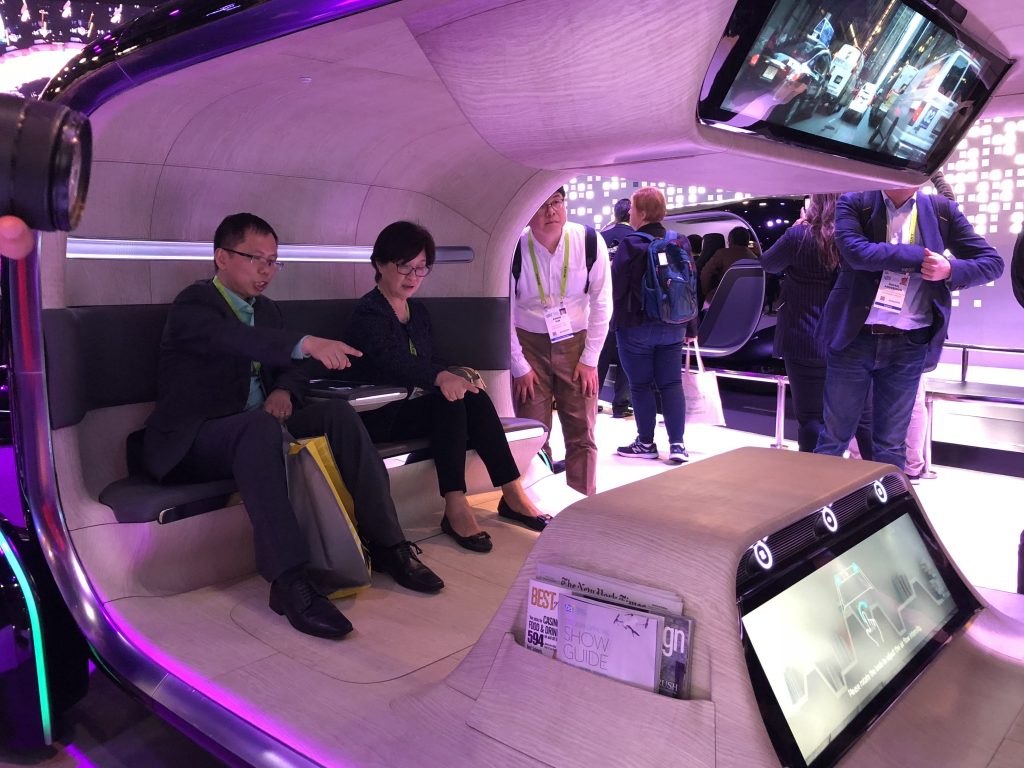
Innovation in this space takes on a new meaning when the vehicle isn’t a concept car, but rather a fully laden truck. At CES there was no shortage of trucking companies showing off their highly connected vehicles. For example, Paccar Inc., the parent of Peterbilt Motors Co. and Kenworth Truck Co. had an exhibit that featured a pair of battery-electric Peterbilt models and a hydrogen-electric truck from Kenworth and Toyota. Autonomous truck startup TuSimple also returned to CES, where it offered demonstrations of the sensors and machine vision behind its self-driving technology and announced plans to expand its US fleet to 40 trucks by June.
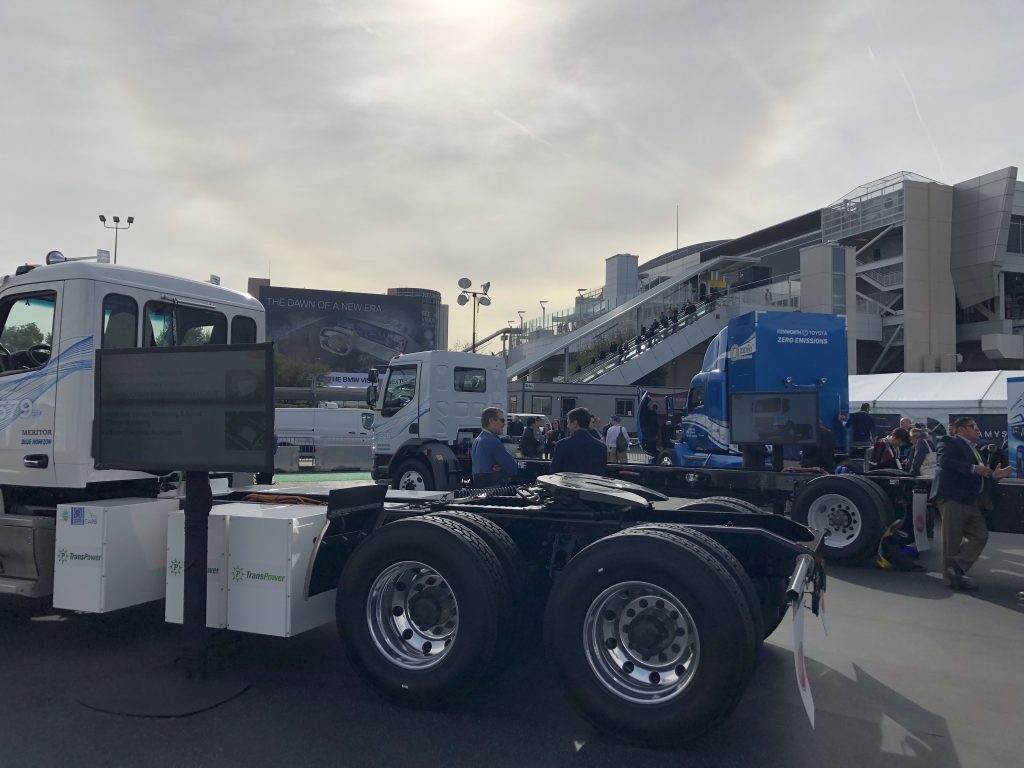 At CES, autonomous vehicle concepts from all of the global car brands were on display. Typically the German and Asian manufacturers showed a wide range of vehicles that continued to look like ‘travel pods’ or people movers rather than traditional automobiles, while US-based brands tended to focus on the infotainment services within the car. In summary, CES’s auto offerings showed that there is a very strong ecosystem of partners determined to change the way that we get from point A to point B in a safe and sustainable manner. In parallel, the ability to extend vehicle ride sharing across multiple modes of transportation including bicycles and helicopters (Bell’s Nexus product) is driven by high speed, real-time and accurate data fed from thousands of intelligent sensors.
At CES, autonomous vehicle concepts from all of the global car brands were on display. Typically the German and Asian manufacturers showed a wide range of vehicles that continued to look like ‘travel pods’ or people movers rather than traditional automobiles, while US-based brands tended to focus on the infotainment services within the car. In summary, CES’s auto offerings showed that there is a very strong ecosystem of partners determined to change the way that we get from point A to point B in a safe and sustainable manner. In parallel, the ability to extend vehicle ride sharing across multiple modes of transportation including bicycles and helicopters (Bell’s Nexus product) is driven by high speed, real-time and accurate data fed from thousands of intelligent sensors.
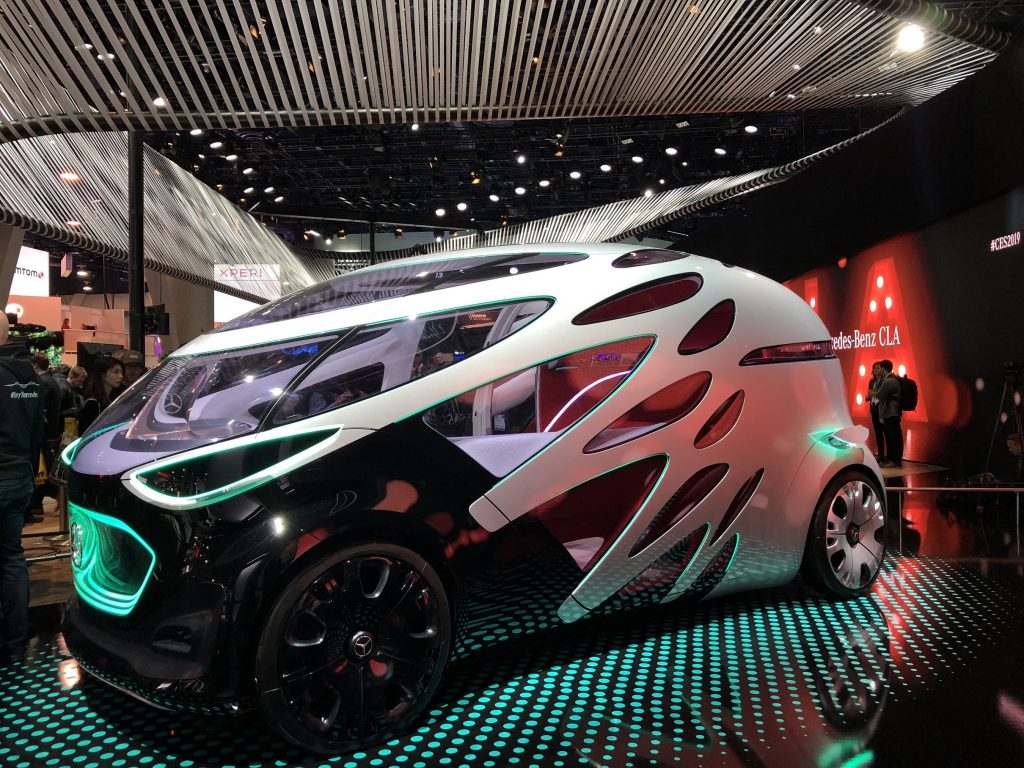
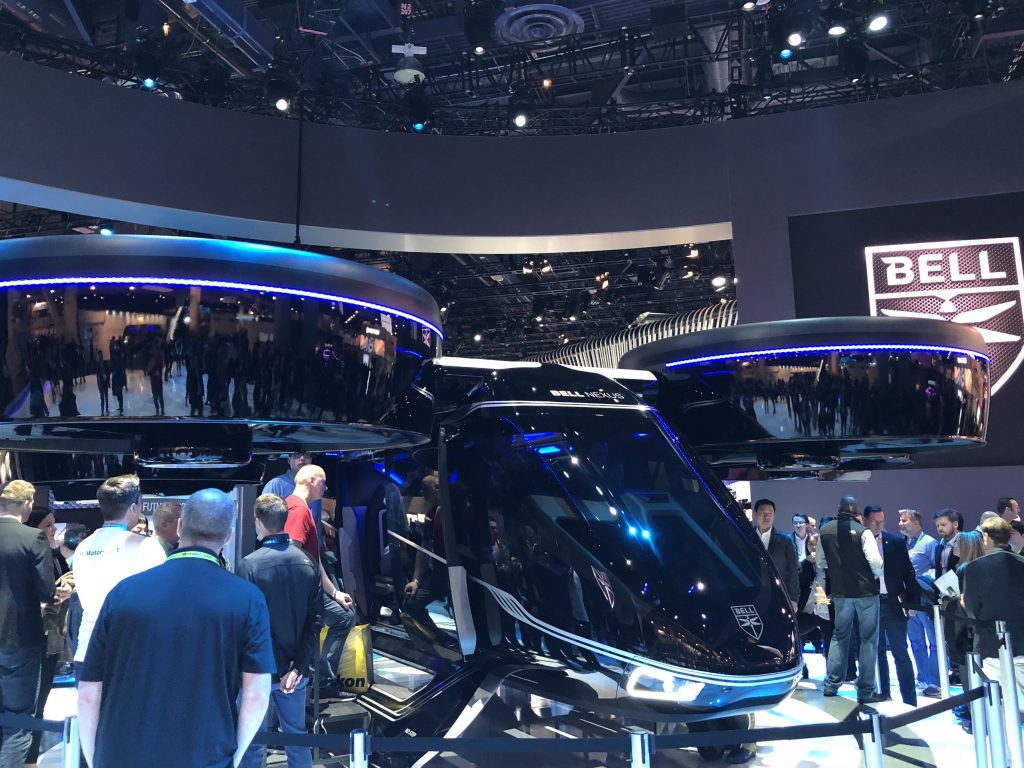
In conclusion, CES confirmed for me that despite the technical greatness of 5G, telecom operators continue to appear to be lost in their positioning of the product. Part of this may be stemming from the significant investment and consequently the risk of return on that investment. Part of it may be – like IoT – defining what 5G is really all about. Early IoT success stories have shown that it’s as much about positioning the business value around the data as it is about connectivity. Finally, CES showed me that while fully autonomous driving societies are several decades away, the strong industrial ecosystems that exist today are making significant progress towards that future.
In my article “Which Top IoT companies are losing, keeping or winning its Charm in 2017?”, I reviewed the Top 10 IoT companies that lost, maintained or gained Charm in the IoT sector in 2017. Here are my updates for 2018.
Defining Charm. The power of pleasing or attracting through their strategy, investments, innovation, teams, products, events and media presence. Their attractiveness is well received all-round – by investors, customers, developers and analysts.
Which Ones Lost Charm in 2018?
The 5 Top companies that have lost IoT charm in 2018 are:
- Cisco. According to a Cisco study in 2017, only 26% of companies surveyed say they have achieved success with their IoT initiatives. And maybe executives at Cisco considered that it was time to go back to the basic. Cisco has taken their intent-based networking concept, which they first revealed in June 2017, and extended it to IoT. Maybe a cohesive IoT Strategy has begun to take shape at Cisco last year, but I did not see expected results of their Cisco Kinetic platform. I do not see any merits in the company gaining their Charm.
- GE Digital. In 2018, GE Digital´s leadership in Industrial IoT has remained in question. The parent company GE is expected to spin off the division into a standalone firm and is selling a majority stake in ServiceMax, considered a strategic acquisition only 2 years ago. All the turbulence around GE has negatively affected the sales of the Predix IoT Platform during 2018. No doubt that GE Digital lost their Charm in 2018.
- IBM. In spite of IBM Watson being named a leader in Worldwide IoT Platforms for 2017 by the IDC MarketScape, the results of IoT investment in 2016 did not show expected results. IBM continues to lose relevance in 2018 against other Cloud IoT vendors. IBM is pushing to be the driving force in IoT and become once again the most recognisable name in the IoT technology industry. I am confident that after IBM’s acquisition of Red Hat the company has the potential to recover their Charm in 2019. Great expectations for next year but in 2018 they lost their Charm.
- Dell Technologies. Dell Technologies’ Edge and IoT Solutions Division announcements in 2018 have particular resonance for channels. But maybe because the company is launching specific IoT solutions in phases with the appropriate reseller partners, I did not see the scale I had expected. Dell could not repeat the momentum of 2017 and lost their Charm in 2018.
- SAP Leonardo. After investing $2.2 billion in IoT and partner opportunities, SAP rolled out new applications and services around IoT and is making efforts to reduce the complexity of developing and deploying IoT solutions. However I did not see increased market share and new customers wins. SAP Leonardo could not keep their Charm in 2018.
Which Ones are Keeping their Charm?
The 3 Top companies that have kept their IoT Charm in 2018 are:
- PTC. Since Rockwell and PTC announced their partnership earlier 2018 at Rockwell – including a $1 billion equity investment from Rockwell into PTC – the two companies have been hard at work to bring their respective offerings into alignment. And before the end of the year they released their first collaborative offering: FactoryTalk InnovationSuite, which provides improved data insights through a single source of operations visibility and systems status. PTC also partners with Microsoft to help customers accelerate Digital Transformation in IoT. The company announced in fall 2018 that it is preparing an $18 million restructuring plan in 2019. We will probably see the impact in 2019, but PTC deserves to keep the Charm in 2018.
- Intel. IoTSWC 2018 awarded Intel-ARM-Pelion for innovative solutions jointly developed by Intel, ARM and Pelion enabling users to connect any IoT device to the cloud in a matter of seconds. Reducing the complexity of IoT development, Intel revamped their IoT roadmap to benefit developers and integrators in 2018. Other news through 2018 that helps Intel keep their charm were: Intel Capital pumps $72 million into AI, IoT, cloud and silicon startups, $115 million invested so far in 2018. Dell Technologies is combining tools from its broad portfolio with technology from Intel and partners in the Dell Technologies IoT Solutions Partner Program. Intel deserves to keep their Charm in 2018.
- AWS. In AWS re:Invent 2018, Amazon announced a variety of AWS IoT releases. Also, AWS IoT Greengrass extended functionality with connectors to external applications, hardware root of trust security, and isolation configurations , AWS IoT Device Management Now Provides New Features for Fleet Indexing and Jobs and Announcing AWS IoT SiteWise, Now Available in Preview. No doubt AWS has kept their Charm in 2018.
Which Ones are Winning Charm?
The 3 Top companies that have won IoT Charm in 2018 are:
- Microsoft. Microsoft is now the world’s most valuable company. The company made a major statement earlier in 2018 when they announced a $5 billion commitment to IoT projects for the next 4 years. That new investment has already resulted in new products, such as Azure Sphere and Azure Digital Twins. The company also launched their IoT deployment and management platform Axure IoT Central to the general public. New customers, new partners and good analyst recommendations makes them win the Charm in 2018.
- ARM. The list of ARM’s acquisitions in 2018, includes enterprise data management leader, Treasure Data (enabling device-to-data IoT platform), Stream Technologies (to expands IoT connectivity and device management capabilities) and ChaoLogix. These acquisitions and the new Pelion IoT Platform will give ARM businesses super powers. For the second consecutive year, ARM is in the Top winners of the IoT Charm list.
- Google. Google I/O 2018 marks a new era for IoT devices with new Google Assistant capabilities. In 2018 Google bought Xively to improve their IoT platform. The company invested in creating a strong ecosystem adding new IoT partners. Finally Google forays into edge computing with cloud IoT Edge and TPU. Good reasons to include Google in the winners list.
Thanks in advance for your Likes and Shares


